My attention was recently directed to an article that was ostensibly a review of a one-day revolver class at ITTS (which I had taken myself, back in 2019), but drifted into a conversation about revolver reliability. The author, who appears to be new to handguns and shooting, was rather shocked to see 5 of the 14 revolvers in the class (including their own) “had malfunctioned so irreparably that they were unusable” before they managed to get through even 200 rounds. The remainder of the article described the relative fragility of revolvers and concluded that they lagged far behind their semiauto pistol counterparts when it came to reliability.
Sigh.
Honestly, I get rather exhausted by people who make sweeping statements like this without sufficient evidence or context, and I normally ignore them. However, since this article was shared in a popular and respected industry blog, and received widespread attention as a result, I’m having a hard time walking away from this one.
So, I thought I’d share an alternative view about the comparison between revolver and autopistol reliability, if you’ll permit me. Sound good? OK, here we go . . .
Failures
First, let’s review the five failures that the author discussed:
-
-
-
- Failure #1 was a gun that started to exhibit timing issues, and shaved parts of the bullet off (we call that “spitting,” and one of these fragments struck the author, causing some minor bleeding). This gun soon had the sideplate “fly off” and the cylinder “go skittering down range,” according to the author;
-
-
-
-
-
- Failure #2 was a gun from the same company (although a different model) that had the “exact same thing” happen to it a short time later. Hmmm…..strange;
-
-
-
-
-
- Failure #3 was a gun whose cylinder was “so jammed up with carbon that it took several minutes with a punch to get the casing out;”
-
-
-
-
-
- Failure #4 was the author’s gun, in which the timing “went out so irreparably that I could no longer pull the trigger;”
-
-
-
-
-
- Failure #5 was a gun with an alloy frame whose barrel “torqued so badly that the sights were at about a ten-degree angle.”
-
-
Examination
OK, let’s dissect these failures a little bit:
-
-
- Failure #1 was almost certainly caused by an owner who failed to conduct basic maintenance on their firearm. In this case, the owner failed to inspect the screws in the sideplate and ensure they were properly tightened. When the screws worked themselves loose under recoil (as screws on guns do—it’s a thing, as Darryl Bolke might say), the cylinder started to become improperly indexed, causing the bullet to strike the forcing cone off-center and get shaved. Ignoring this important warning sign, the owner continued to fire the gun until the screws lost all remaining tension and the unsecured sideplate came off. One of those screws was supposed to retain the yoke, and when it departed for destinations unknown, the yoke was now free to slide off the frame and send the cylinder plummeting;
-
-
-
- Failure #2 was a repeat of the first, by the author’s description, and shares the same cause—an owner (perhaps the same as #1?) who failed to conduct basic maintenance on their firearm;
-
-
-
- Failure #3 also appears to have been caused by an owner who failed to conduct basic maintenance on their firearm. In this case, the owner failed to scrub the chambers of the cylinder clean, and the fouling eventually built up to the point that the ejection of spent cases was affected. One has to imagine this shooter was provided plenty of warning about the impending doom–long before the fired cases got stuck in the cylinder, the shooter was probably having to force them into the chamber–but they ignored this important sign;
-
-
-
- Failure #4 is a little harder to diagnose, but I think one of several scenarios is likely. The author stated that the gun in question was a Ruger SP101, with “fewer than 500 rounds” fired, that had action work performed on it (“a smoothing of the trigger sear”) by a gunsmith.
-
It’s possible that the gun simply had an uncommon, catastrophic failure of one of its parts. The author hadn’t shot many rounds through it yet, but a latent defect could have been lurking, waiting for the right moment to strike.
However, the fact that the gun had been modified raises a reasonable question about the quality of the work performed–did the gunsmith fail to do the work properly, or address all of the issues with this gun during surgery? Did they ruin a part (like the sear or hammer, with their complex engagement surfaces and small contact areas, which endure a lot of stress) that later failed prematurely?
The author describes the gunsmith that performed the work on his gun as “excellent” and “licensed” (a strange term to use, as gunsmiths aren’t generally “licensed”–they may be certificated by a school, but not licensed. Gunsmiths may possess business or federal firearms licenses to facilitate their employment, but these don’t provide any guarantee of competence or quality). However, it’s quite possible that this gunsmith wasn’t as capable as the author thought he was. Honestly, there’s a wide spectrum of gunsmithing expertise out there, ranging from simple parts replacers, to true artisans and wizards (like Bobby Tyler, Doug Turnbull, Marc Morganti, and Dave Lauck). Many gunsmiths today simply aren’t familiar enough with revolvers to do good work on their more complex actions, even if they think they are.
Additionally, even the best, most reputable, gunsmiths can make a mistake on a job. I learned this the hard way after spending a princely sum on a Browning Hi Power makeover at a top tier shop, only to have it malfunction on every round, because the gunsmith failed to fit the firing pin retaining plate properly before shipping it (apparently, the test firing that was promised as part of the expensive rehab did not happen). The shop was (and still is) generally regarded as the best place to have your Hi Power worked on, but they stumbled on my job (yes, they fixed it, later). As Forrest would say, it happens, so a good reputation doesn’t necessarily guarantee a good result.
So, the author’s gun could have gone down because of a naturally occurring part failure, or more likely because someone didn’t do a good job when they worked on it. There’s also a possibility that the author misdiagnosed the problem, and the extractor simply had too much junk underneath it for the gun to work properly, or some kind of fouling (powder flakes, part of a blown primer, a sliver of bullet jacket or cartridge brass, etc.) worked its way into the action, and tied up the gun–the former is easy to predict and prevent, the latter a bit harder. Here we go, though, back to that maintenance thing again;
-
-
- Failure #5 is also hard to diagnose without seeing the gun, but it’s not unheard of for today’s two-piece, shrouded barrels to unscrew. The same goes for the older, one-piece barrels, which haven’t been properly installed at the factory. Sometimes an attentive owner will see this problem start to develop (especially on the shrouded barrels), and sometimes there’s little warning.
-
Analysis–Maintenance
A full 60% of these failed guns (and possibly more) bit the dust due to their owners’ inattention to proper maintenance. This is a human problem, not a gun problem.
Tools and machines require care and maintenance to keep working. If you fail to care for and maintain your equipment, then it’s your fault when it finally breaks, not the equipment’s. Furthermore, if you fail to pay attention to, and heed, the warning signs that your equipment gives you as a problem is developing, it’s not the equipment’s fault when the impending failure catches you by surprise.
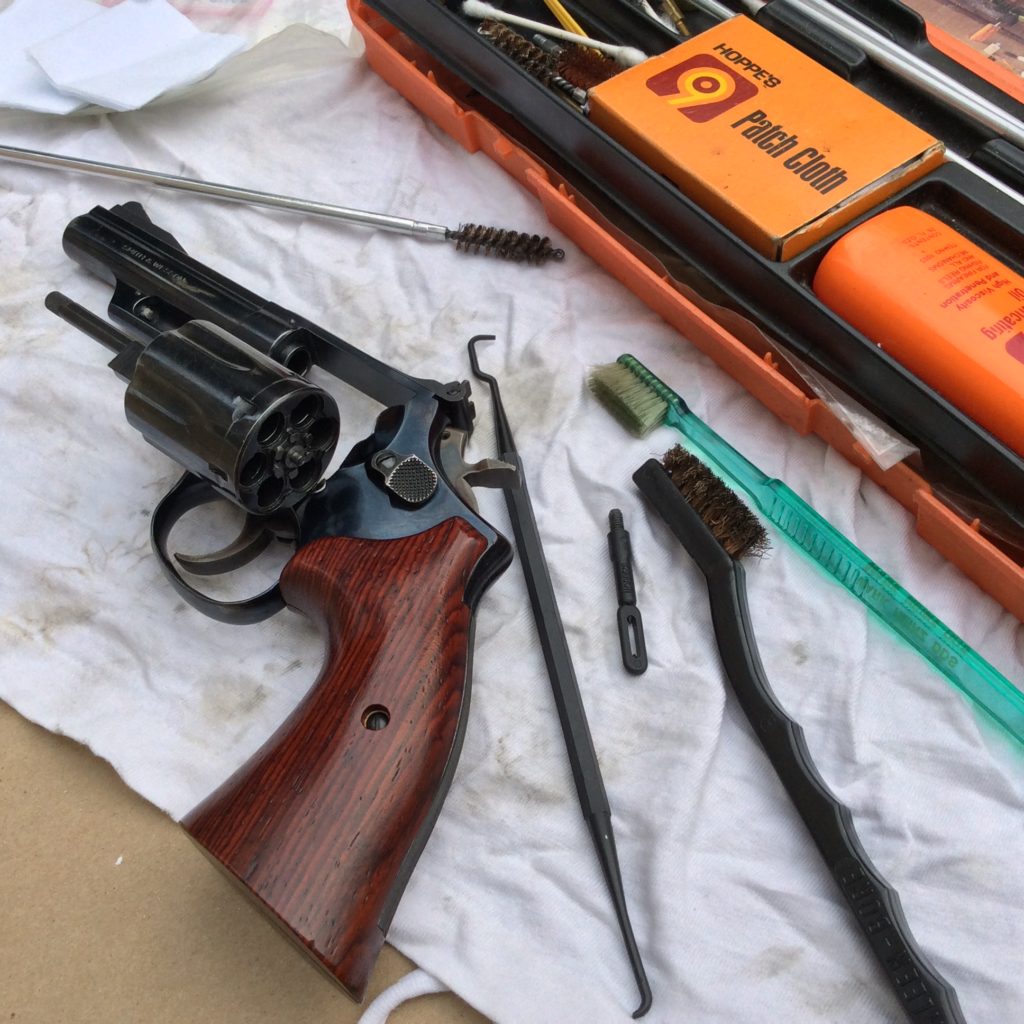
Revolvers, like all guns, require maintenance. Chambers need to be cleaned, the area under the extractor needs to be cleaned, moving parts need to be kept clean and lubricated, screws need to be periodically checked and tightened, the forcing cone and bore need to be scrubbed, and so on. If you don’t do these things, your revolver will certainly fail, and it won’t be the gun’s fault when it does.
Furthermore, when your revolver starts to warn you that something is wrong (the cylinder becomes hard to close, it becomes difficult to insert cartridges into the chambers, the gun starts to spit, the trigger becomes hard to pull), you have to be alert enough to notice, and smart enough to investigate what’s going on, before you resume shooting.
But your autopistols are no different in this regard, are they? Chambers, slide rails, frame rails, breech faces and other parts must be kept clean. Barrels, slides and frames must be properly lubricated. Magazines must be maintained. Screws and pins need to be periodically checked and tightened/secured. If you fail to do these things, your auto will choke and break, too.
And when your slide begins to seem sluggish, the extraction pattern of your fired cases changes, or rounds fail to feed, fire, extract and eject properly, then you have to pay attention to those warnings and fix the problem.
This isn’t a revolver versus auto thing, it’s a YOU thing—a human problem, not a gun problem.
Analysis–Gunsmithing
In 20% of the failed guns, there’s a possibility (if not a likelihood) that the work performed by a gunsmith contributed to the failure. Once again, this is a human problem, not a gun problem.
Because the autopistol is dominant in the shooting world, and it takes a lot of specialized knowledge, skill, experience, parts and tools to do good work on a revolver’s more complex action, there’s a shortage of really good revolver gunsmiths out there. If you don’t believe me, try to find a gunsmith that truly understands how a classic Colt action works, and can obtain the parts necessary to fix the timing on your old snake gun or Detective Special, then report back on what you find.
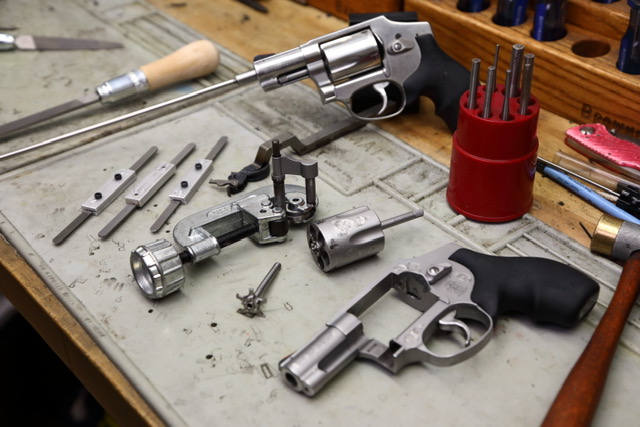
Poor quality gunsmithing will kill a revolver, perhaps even more quickly than an auto, because the interrelationship between the moving parts in a revolver’s action is much more complex. The comparison between a Smith & Wesson revolver action and a Smith & Wesson M&P autopistol action is stark—the former relies on a series of well-balanced, moving parts that bear on each other in tangential arcs to transmit the required force, while the latter relies on a simple, sliding cam or wedge. Some care is required here, to avoid creating new problems while trying to fix others, when you dive into a revolver’s innards.
But bad gunsmithing will kill an auto as quickly as it will kill a revolver. Once, when I was much younger and dumber, I sent my prized, West German Sig P226 off to a gunsmith, who promoted himself as a “Sig Sauer Specialist,” for a duty action job. The letter with my request was very specific—smooth the trigger pull without significant changes to the weight of pull, while preserving 100% ignition reliability. That’s it. Just smooth out the trigger.
Several of the magazine writers (who, I now understand, were probably trading positive press for free gunsmithing and a paycheck) said this gunsmith was the shizzle, and in those halcyon, pre-internet days, we trusted them because they were the best source of information we had on businesses outside of our area code.
Well, the short version of my story is that my trust was misplaced, because this “specialist” ruined my gun. It wouldn’t ignite ANY ammunition in double action mode, and would frequently fail to fire in single action mode, as well. The frame, slide and hammer were so excessively polished (this polishing was neither requested nor required) that they were damaged, and the barrel was polished down to the white, stripping the protective qualities and attractive appearance of the bluing, leaving it an ugly, unfinished, rust trap.
Live and learn, I suppose, but I don’t blame the gun’s design for the failures that I experienced after it was turned over to an “excellent” and “licensed” gunsmith. The gun was completely reliable, with not a single malfunction in a thousand-plus rounds, before he worked on it. Afterwards, it was a mess.
Again, that’s a human problem, not a gun problem.
Analysis–Lemons
One of the five guns reported on (20% of the total) seems like it was the victim of inattention at the factory, with a barrel that wasn’t properly installed, and began to back out.
Unfortunately, some lemons will leak out of the factory from time to time. Any manufacturing process will create some duds, and while most of these are stopped by factory workers before they get out the door, a few will always manage to escape their notice. Sometimes the defects are easy for consumers to detect, and sometimes they are not.
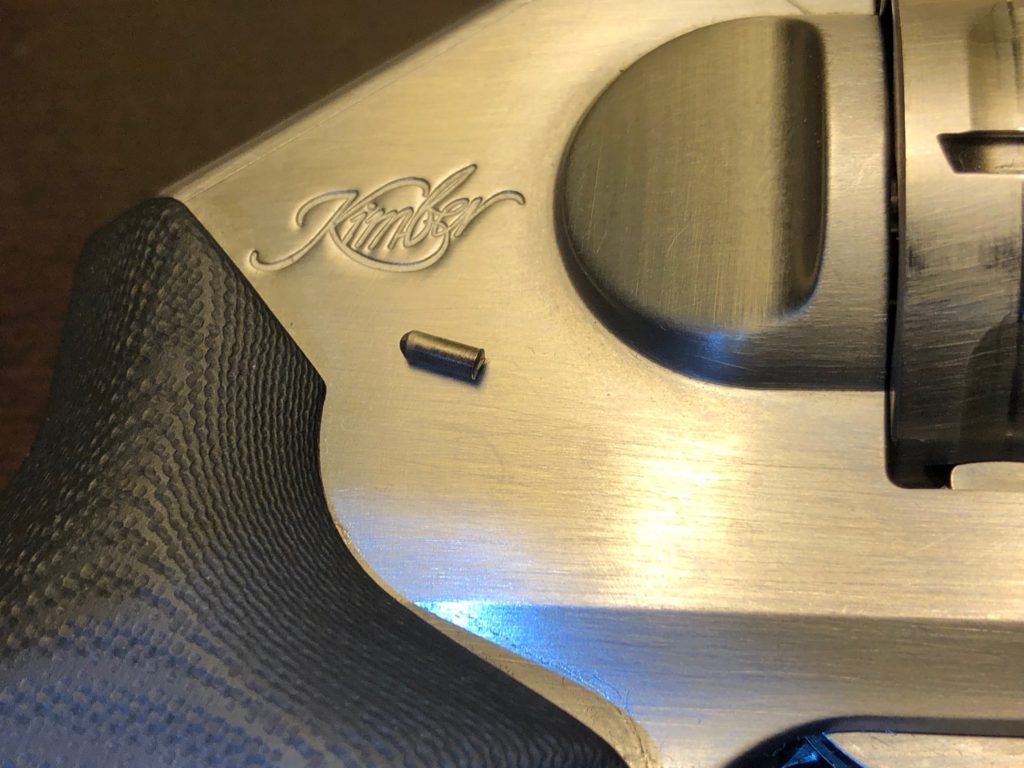
In fairness, I have never detected a greater proportion of revolver lemons than autopistol lemons, out there. I’ve seen them both, and neither type has seemed to be more prone to factory defects. Yes, I’ve seen some revolvers where the barrels were not properly installed on their frames, cylinders weren’t timed properly, or action parts were flawed, but I’ve also seen autopistols with similar defects.
The last Glock 19 I purchased, for example, had a flawed barrel that needed to be replaced, and I’ve had pins, sears, lugs, springs and other small parts fail inside autos without warning, rendering them Hors de combat. A Smith & Wesson auto belonging to a friend once had a sight installed backwards at the factory, and the front sight on my new Colt simply departed into a low Earth orbit during one of my first shooting sessions with the gun. A different Colt of mine had a manufacturing defect that rendered the gun incapable of being disassembled, and I once had a brand-new magazine whose bottom weld failed, sending the guts shooting out the bottom.
Guns may be made on machines, but those machines are operated by humans, and the parts they produce are assembled and inspected by humans, and humans make mistakes.
Let’s all sing along now . . . that’s a human problem, not a gun problem.
Adding it up
So, looking at the failures in this data set, what do we have here? We’ve got three guns that broke down because their owners didn’t maintain them properly, one gun that might have legitimately broken, might have been boogered up by Jojo the Gun Plumber (thanks for that one, Stuart!), or might have become fouled, and one gun that was probably assembled improperly at the factory.
Does this amount to a stinging indictment of the revolver? Hardly. As discussed, we could easily find these same flaws in a sampling of semiauto pistols.
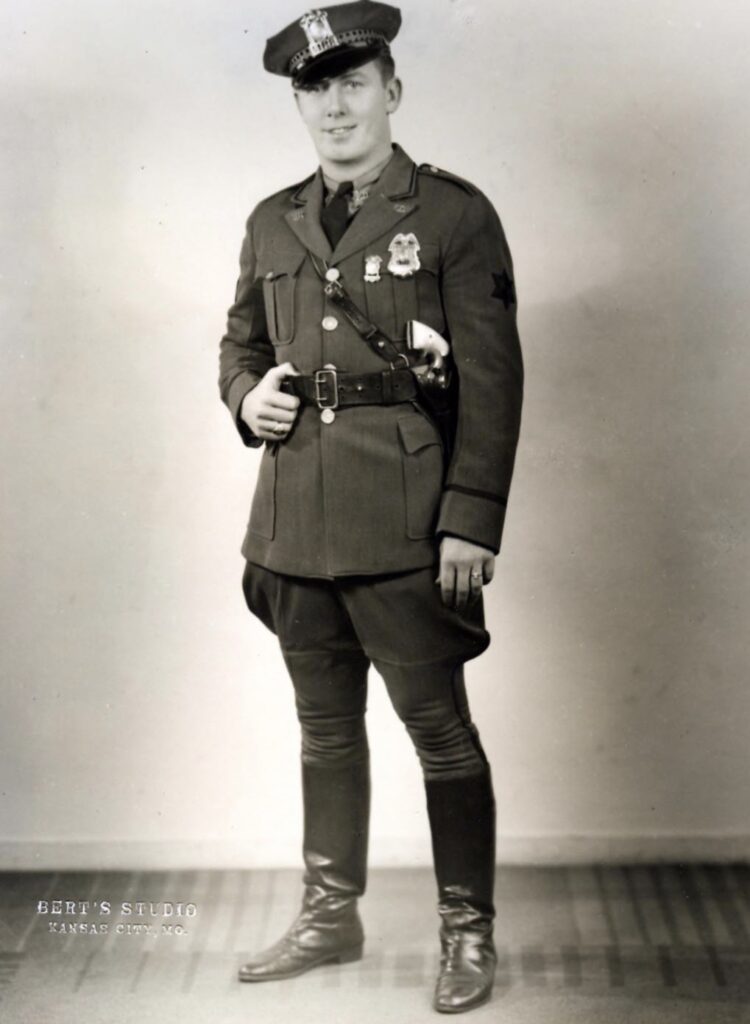
Yet, the author of the aforementioned piece deduced, from this experience, that revolvers are inherently less reliable than autos, and warned that, “If I were ordered to take a squad into a situation where our lives might depend on our sidearms, I would be very reluctant to equip my men and my women with revolvers.” The modern autopistol, opined the author, is probably a better choice than the revolver, because it’s more inherently reliable.
Not so fast
Imagine how surprised he would be, then, to talk to my good friend who’s an armorer for a small police department in a major metropolitan area. My friend recently completed a five-round test-firing and inspection of his officers’ duty and off-duty handguns (around 250 guns, total), and discovered a stunning number of autopistol malfunctions in the process.
About half of these guns were Glock autos, with (roughly) another quarter being striker-fired autos of other makes (CZ, Smith & Wesson, Sig Sauer, Springfield, etc.). Roughly another quarter were hammer-fired guns (1911s and DA/SA guns, like Sigs, Berettas, and HKs), and there were a handful of small revolvers in the mix (J-Frames and LCRs, mostly).
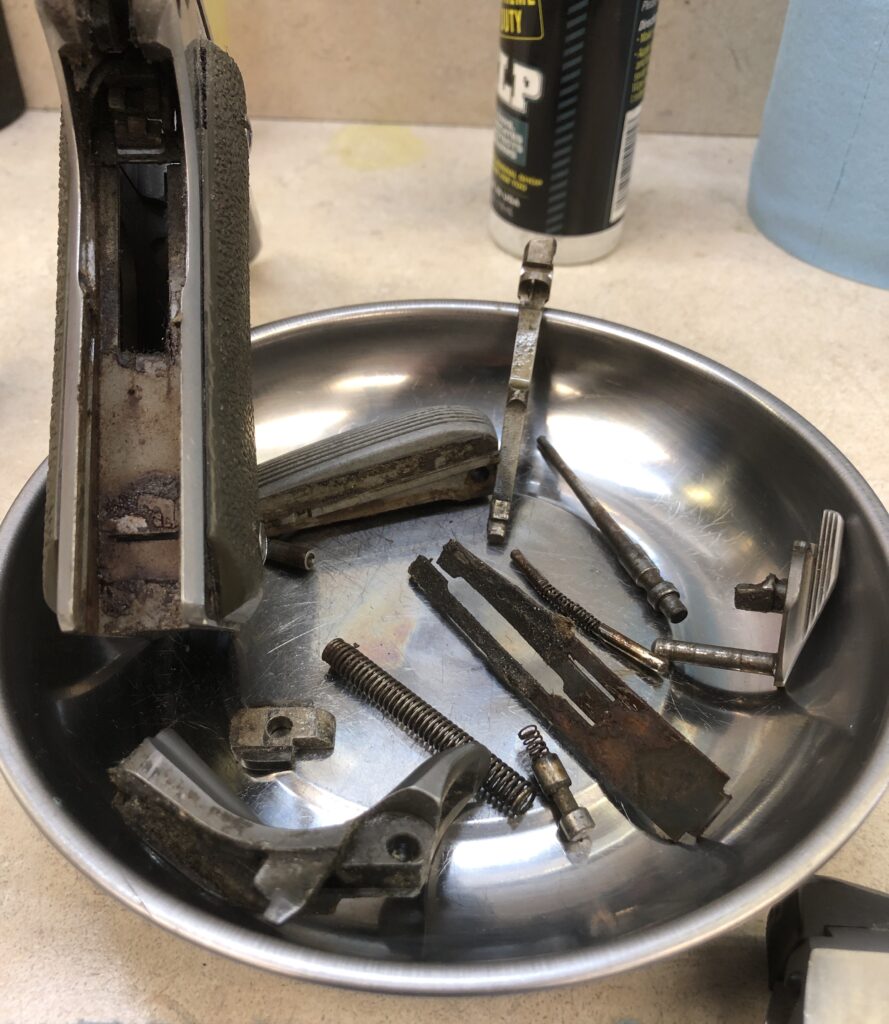
My shocked friend estimated that almost 9 in 10 (no, that’s not a typo–almost 90%!) of the striker-fired guns experienced at least one failure to fire or eject in the course of the five-round test, mostly attributable to an excess of congealed oil and solvent in the striker channels and/or extractor pockets of the guns. One officer (who, ironically, was a certified Glock armorer) had three of his five Glocks fail to run reliably. One M&P pistol that was tested beyond the 5 rounds malfunctioned a total of 5 times in 15 rounds.
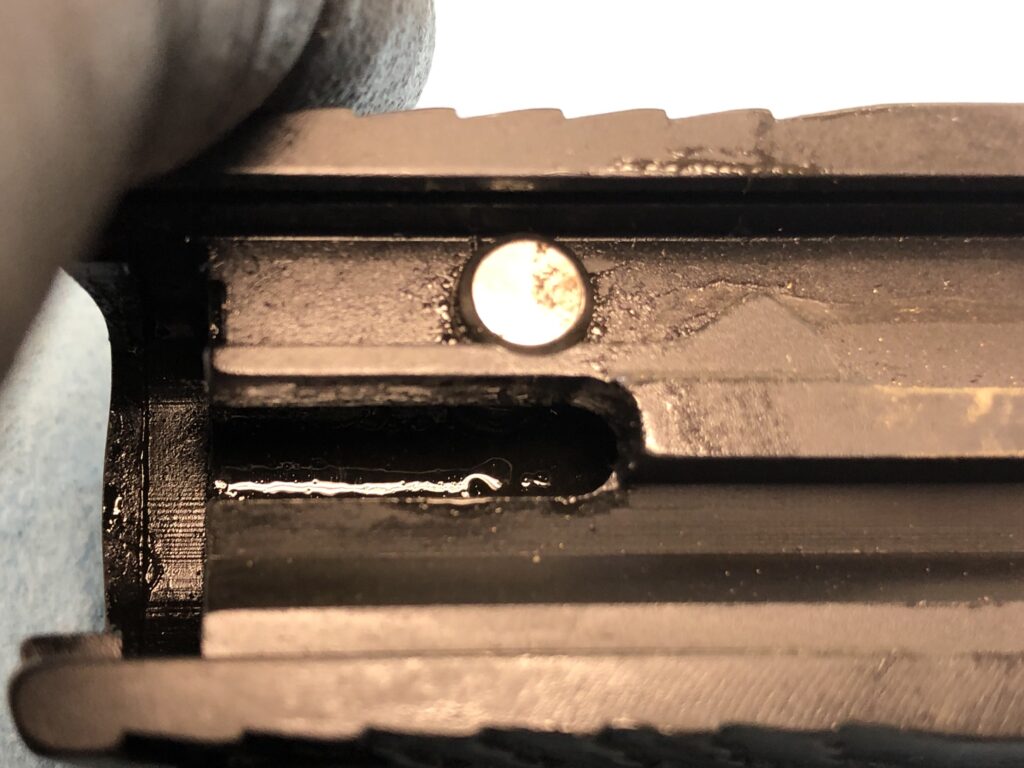
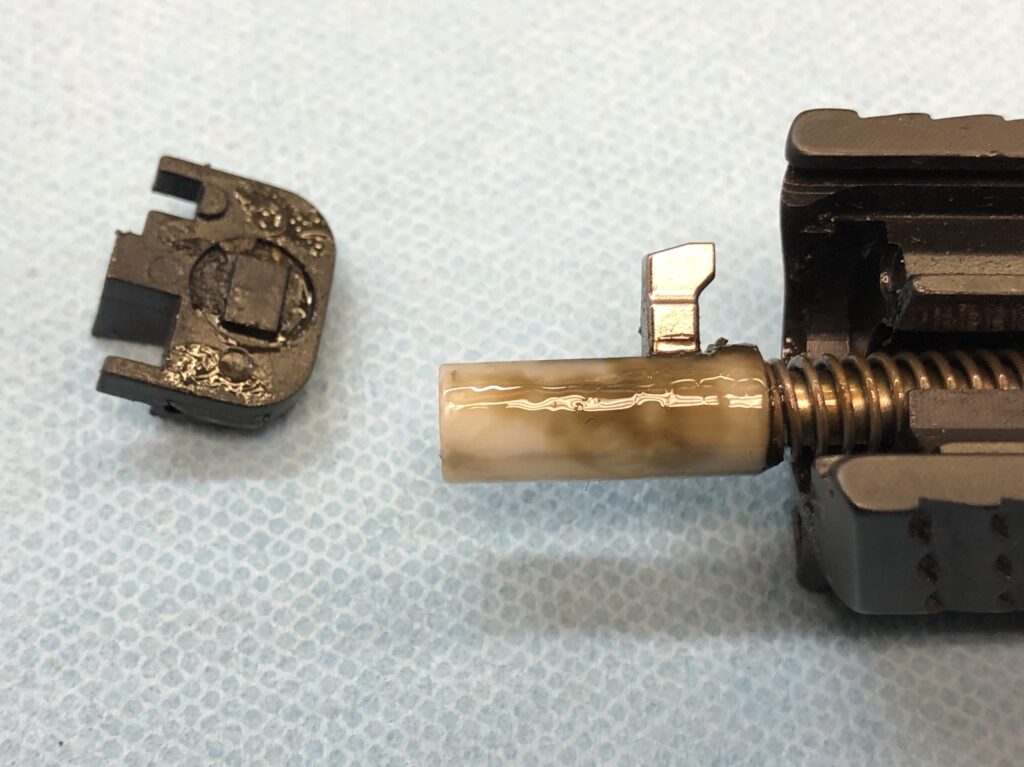
In contrast, NONE of the revolvers that were tested failed to fire or extract, even on the S&W 340 PD snub that lost part of its Scandium alloy frame due to corrosion stress cracking (a chunk literally flew off the frame where the barrel threads into it), or the Airweight 642 whose yoke and cylinder were so corroded and dirty that the whole assembly had to be beaten off the frame with a mallet for cleaning. The revolvers simply worked—ALL of them.
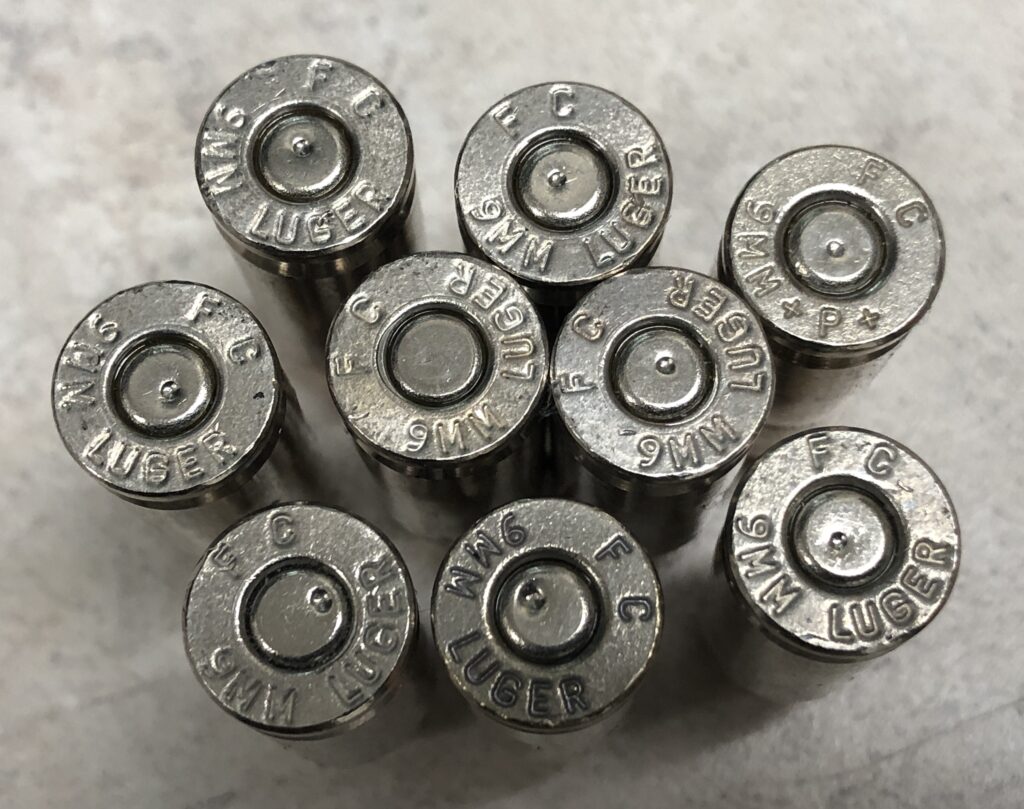
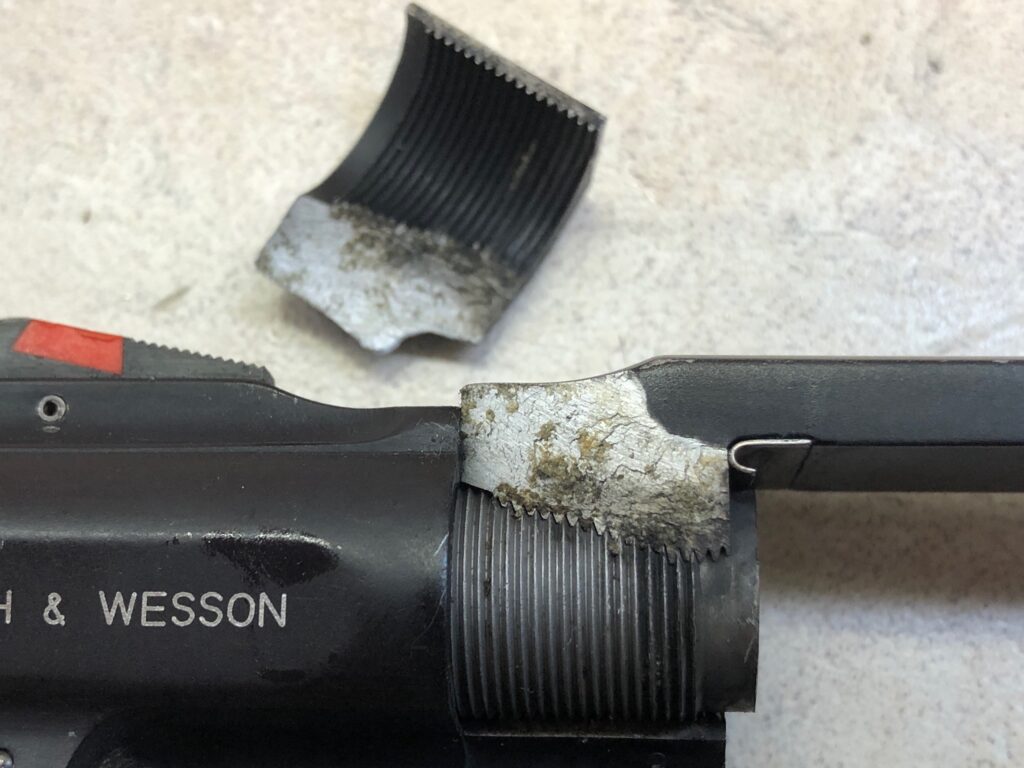
It doesn’t appear that my friend’s experience is unusual, either. Lately, we’re seeing a large number of police shootings, from around the country, where officers are having failures to fire or eject (typically on the first round from the gun) with their striker-fired, semiauto pistols, in circumstances where it does not appear that the malfunctions can be blamed on shooter error (an improper grip, weak platform, interfering with the slide, etc.). In cases like this one, this one, this one, this one, and this one, the semiauto pistols that the aforementioned author thinks are more reliable than revolvers, are failing miserably.
Abuse versus neglect
So, there must be something else that’s going on here, something more nuanced in the reliability comparison between revolver and auto, right? Yes, there is, and it’s the difference between abuse and neglect.
Abuse occurs when you use something for the wrong purpose, or mistreat it and cause damage. In the context of guns, we abuse them when we drop them, bang them against hard objects, use them as impact tools, or let them get excessively dirty or contaminated.
In contrast, neglect occurs when you fail to care for something, and don’t attend to its needs properly. In the context of guns, we neglect them when we don’t conduct routine cleaning and lubrication, fail to perform scheduled parts replacements (like spring changes), and fail to load them with quality ammunition.
Guns don’t like to be neglected OR abused, but a legion of sharp RevolverGuys from around the world have previously noted that autopistols tend to be more resistant to abuse, while revolvers tend to be more resistant to neglect. We’ll also observe that autos tend to be less resistant to deficiencies in the shooter’s technique, and a balanced view of revolver and auto reliability needs to take all of these factors into effect.
By the very nature of their design, revolvers have a greater number of finely-tuned parts, are more “open” to contaminants, and operate with more restrictive tolerances than their autopistol brethren, making them less resistant to abuse. A revolver is more likely to be rendered inoperative when it’s dropped on the concrete or in the mud—things an auto will more easily shrug off.
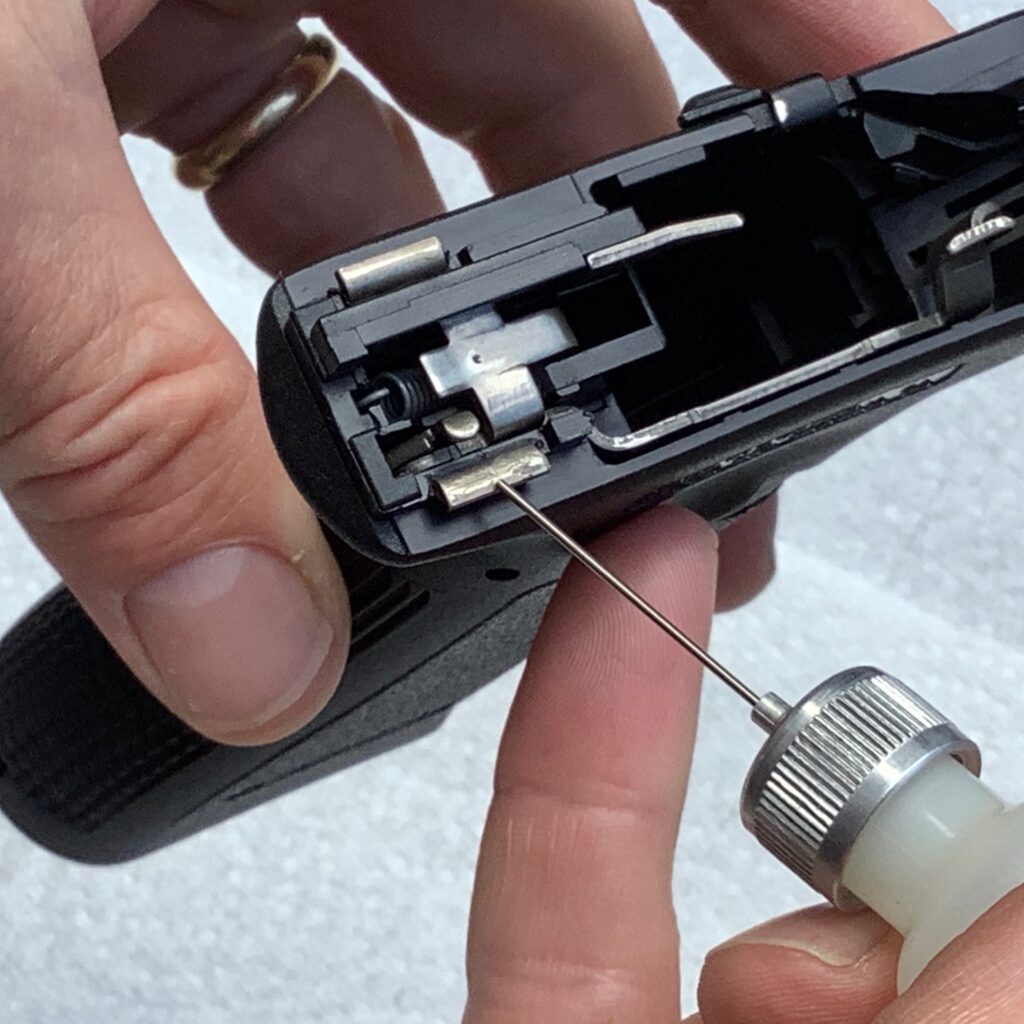
In contrast, an autopistol is more finicky and is more likely to malfunction when it hasn’t been properly lubricated, its interval parts haven’t been replaced in a timely fashion, it’s fed ammunition that it doesn’t like, or the shooter’s “platform” is compromised in some way. An auto might choke if it’s bone dry, limp-wristed, has a tired recoil or magazine spring, or is fed ammunition that is considerably more or less powerful than normal, but a revolver will typically laugh all of that off. As Darryl Bolke has noted in these pages, you can stick a revolver in a sock drawer for half a century (or maybe a cop’s pocket or ankle holster for a month?) and it will work as long as you can pull the trigger, but the same result is not as likely with an auto.
Summary
So, the question of reliability is highly dependent on context, with the answer depending largely on the skill and technique of the operator, and whether or not the equipment has suffered from abuse or neglect. In an austere, harsh setting, like a military battlefield, we might default to equipment that offers greater resistance to abuse. However, in a situation where the equipment is less likely to be harshly mistreated, and more likely to be simply ignored by an inattentive user, or employed by a less-skilled operator, we might benefit from placing more emphasis on resistance to neglect and poor technique.
So, a reasonable view of reliability begins with the acceptance that revolvers and autos each come with their own baggage, and neither choice is inherently more reliable than the other. Both types of guns have their own weaknesses, and if these weaknesses aren’t properly addressed by their owners and operators, the guns won’t function as designed. Conversely, a little bit of care and attention can go a long way towards making either system reliable.
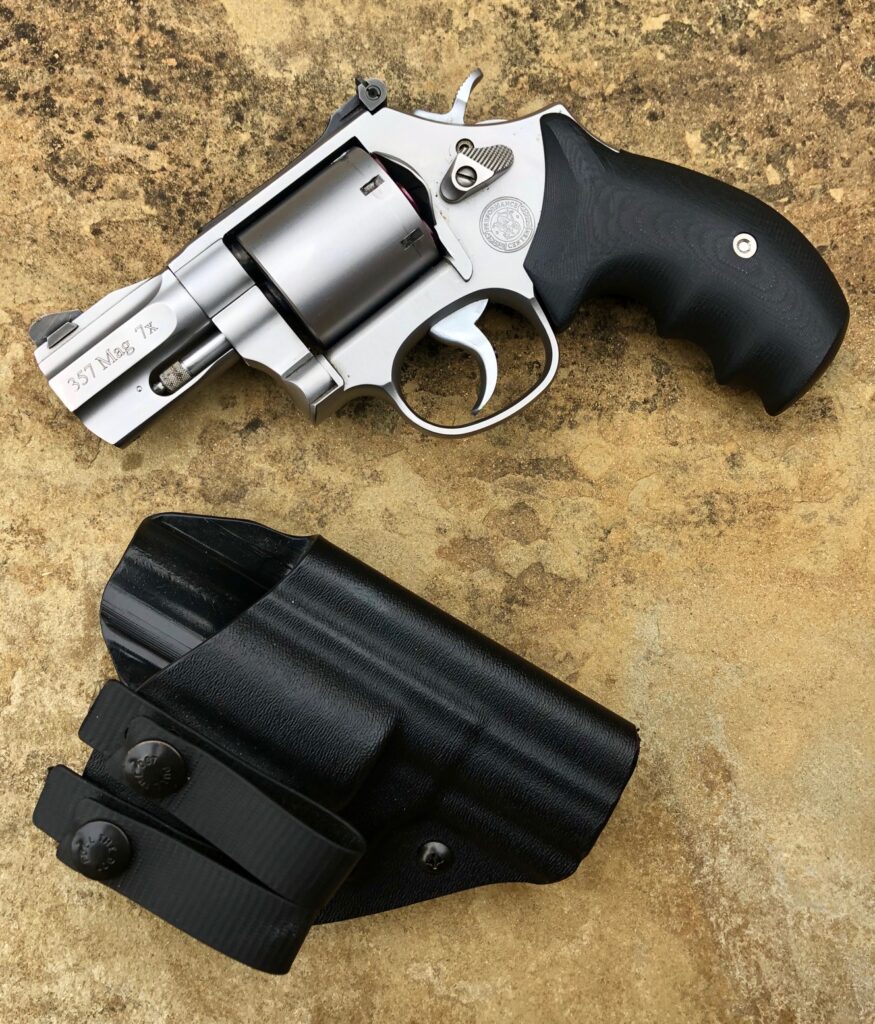
While it’s regrettable that many of the revolvers in the author’s class failed to perform as expected, this doesn’t prove anything about the relative merits between round and square guns. A factory defect, a careless gunsmith, or an inattentive shooter can ruin any platform’s chance of operating properly, so before we condemn an entire class of handguns as being “less reliable,” we need to consider both facts and context.
Revolvers work and revolvers break. Autos work and autos break. If a shooter is concerned about reliability, they should focus on properly maintaining their gear, safeguarding it from damage, getting good training and practice, feeding their gun quality ammunition, and carrying a second gun as insurance.
This will be a much more effective strategy than fretting about whether their gun has a cylinder or a magazine.

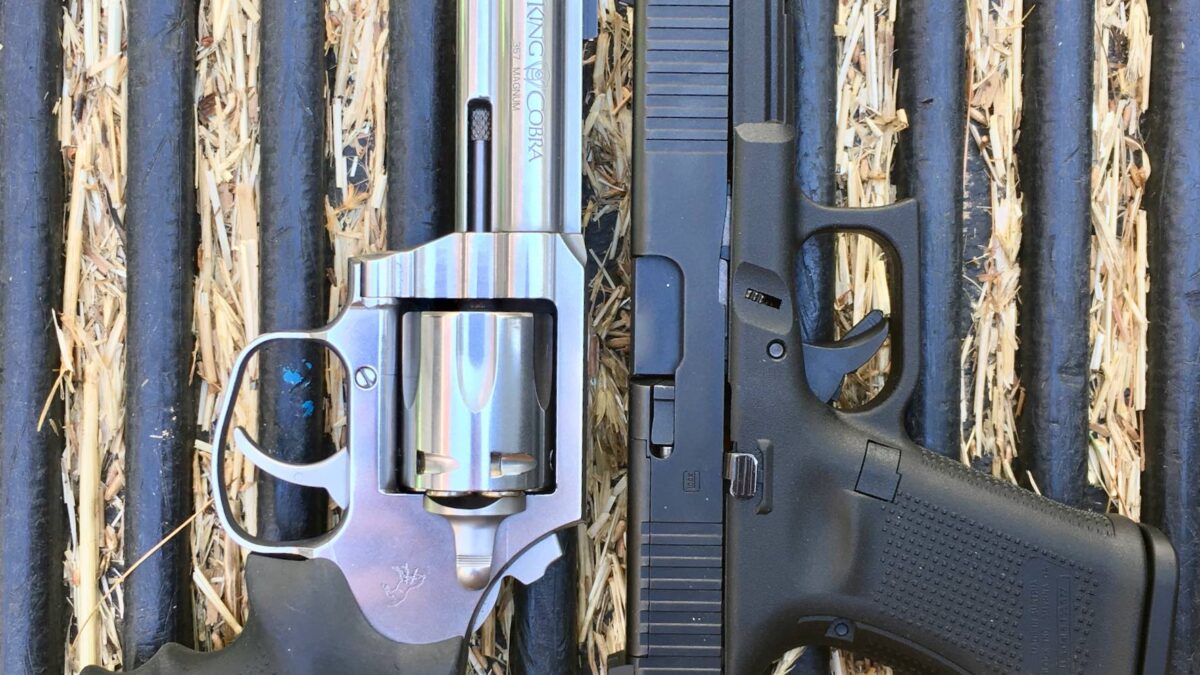
Excellent, well-reasoned article. I’ll still go out of my way to avoid the bottom-feeder vs. revolver “discussions” at the two ranges we frequent as I am vastly outnumbered.
I fail to understand those who fail to properly maintain their weapons.
This revolver guy gets almost as much satisfaction cleaning his guns as he does shooting them.
Re: “Lemons”
My documented (somewhere on this most excellent site) 642 failure to fire incident was repaired in Springfield and 200+ rounds and some dry-fire practice with snap caps later, it’s better than new and trusted as a carry weapon, again.
Sh*t happens. Fortunately this particular dump was taken during dry-fire practice.
Keep up the fantastic work!
Thank you, Bill! Glad you enjoyed it. I’m relieved to hear the bit about the cleaning—I’m like that too, but none of my shooting buddies are. I was starting to wonder if I was alone!
VERY glad to hear your 642 is operating properly again, and appreciate the update here. I remember thinking at the time that the hammer stud probably broke off the frame, internally——did I guess right?
Mike, I wish I could tell you exactly what the problem was.
Here’s the long (apologies) story:
Was told initially that the 642 would be in the hospital for four weeks.
Four weeks pass, I call S&W and ask about the status.
S&W: It’ll be another two weeks.
Me: Will there be a note telling me what the problem was?
S&W: The problem is whatever you wrote on your note when you sent it in.
Me: Let me rephrase that. Will there be an explanation as to why the gun failed to fire?
S&W: There will be a sheet enclosed.
Me: Thanks. (for nothing)
Two weeks later, gun comes back.
Note says:
Problem: Failure to fire
Solution: Repair/replace hammer
Okey dokey. I figured if the issue was as you suggested, I’d get a new frame/gun.
Didn’t get either.
Called S&W. Got the same, unhappy, unhelpful guy.
Me: Got my 642 back, today. Can you tell me exactly what caused the hammer to fail? (figuring maybe it was operator error as I use good ammo and always dry-fire with snap caps)
S&W: What does the note say?
Me: (here we go again) I tell him what it says.
S&W: Well, there was a problem with the hammer.
Me: Can I speak with the smith who did the repair?
S&W: I can’t connect you.
Me: Click.
Keeping my fingers crossed. So far, so good.
Oh Bill, I’ve been down that road myself, before. Frustrating!
The good news is that it’s working properly now, and I hope it stays that way! Enjoy it!
Failure #3 could have been reloaded ammunition into brass that wasn’t resized. I’ve seen 38 special brass where you didn’t need a micrometer to see the bottom blown wider than the top making it harder to load let alone eject.
Oh, absolutely, Steve. It’s been my experience that ammo issues account for at least half of revolver burps, with the other half being poor maintenance, mostly. I assumed that the ammo wasn’t the culprit, based on the description, but it definitely could have been the problem.
Thank you for defending revolvers so effectively in the court of the interwebs, Mike. Your counters to the claims made in that article were logical and reasonable. I have taught revolver specific courses recently to police officers who showed up with guns (mostly borrowed, because the officers didn’t own revolvers) that were in varying stages of neglect. The cops lacked the background with these “mystical old antiques” to properly maintain them and their performance suffered. It’s no wonder that revolvers get a bad rap when folks new to them start off behind the curve like that. It was always a pleasure to see a youngster show up with an old cop’s gun that was well used but pristinely maintained. I don’t recall those guns giving their users any trouble. Harumph to you and Bill’s thoughts on cleaning them too- It’s a therapeutic pursuit.
Kevin, I’ve heard more than one credible story recently about young officers who didn’t know how to unload a revolver that was recovered during their duties. That didn’t take long now, did it? Just a generation or two?
Humans create things with the degree of precision and reliability needed to function economically. Once that is achieved, progress seems to stop.
Consider the computers we are all communicating with. Their processors have billions of parts with precision of nanometers that function for years of use. Most are never maintained.
Then consider automobiles. Forty years ago a typical car needed oil changed every 2,000 miles, and points replaced and retimed on similar basis. They contained a thousand or so parts manufactured with a precision of a thousandth of an inch. They might run a few years without such maintenance but then they would fail. Their parts would function tens of millions of times during those few years.
Guns for the last hundred years or so have a few dozen parts manufactured to a precision similar to automobiles. The best seem to function tens of thousands of times with maintenance every few hundred operations. Compared to cars and computers this is terrible performance, but it is economical. Relatively few guns are fired at need to protect life, and their chances of misfiring those few times are small enough that further development is not demanded.
Consider the automobiles – today’s examples run much longer with less maintenance than those of forty years ago. Economics demanded improvement and it happened. How many years have those striker fired pistols had issues with “an excess of congealed oil and solvent in the striker channels and/or extractor pockets of the guns?” Would automobiles that failed due to an excess of congealed oil, in an area routinely subjected to oiling, be tolerated? Why haven’t such touchy areas been designed out of guns? Economics – if guns were used to protect lives as often as automobiles were driven, their designs would be much more evolved. That they aren’t shows how relatively unimportant guns are.
I dunno, Chris. If we’re talking reliability, I’ll take my guns over my computers any day of the week!
Perhaps firearm designs have simply plateaued with the inherent constraints of working around our metallic cartridges?
Very likely. As many have said, modern firearms are, say, 92% “perfect.”
Any further percentage gain towards 100% will drastically increase cost per percent.
It wouldn’t be economical.
A great, level-headed response, Mike. We humans seem to be endlessly attracted to binary, “this or that” thinking. What your response illustrates is that there is a lot more nuance to the question, as there are with many things, if one cares to delve more deeply into the question.
It’s unfortunate that the author of that blog post continues to get the amount of airtime that does. He’s been trying to assert himself as a self-annointed expert for years and mostly just comes off as a whiney, self-important child. Just take a look at the time he tried to trash Paul Harrell’s knowledge of revolvers, and then watch Paul’s response. Paul calmly and rationally schooled that guy so thoroughly that you could hear the crickets from miles away.
Ooh, I was unaware this gent had a history of this, Hammer. That puts a different spin on the effort, entirely. I’m not surprised that Paul handled it like a gentleman.
It’s always been my experience that most gun owners who often have “problems” with their firearms are, like the author notes, abusing and/or neglecting their guns. More than a few of these geniuses fancy themselves as better engineers than those who designed the products and they obsessively tinker with and “improve” them, frequently rending those gizmos inoperable or unsafe. The school of hard knocks taught me long ago to never buy any of their stuff.
Preach it, Brother!
Had a gent show up to the range a month back while I was working. He had modified his pistol by adding a few hundred bucks’ worth of aftermarket doo-dads to his gun, only to realize that it didn’t work any longer. He was a bit dumbfounded, as all this “stuff” was supposed to turn that stock gun into a paragon of efficiency. I suggested returning it to the stock configuration, and he seemed a bit horrified at the suggestion, as he “knew” the add-ons were “essential.”
Some folks have to learn the hard way.
I think we are going to see things like this more and more often. We are losing knowledge about revolver care to history.
Not here, my RevolverGuy friend!
As usual Mike, a well thought out rational discussion.
I read stuff like the article you mentioned (I clicked the link before I read YOUR’S in its entirety) and just roll my eyes with disgust. I don’t know the author, and while not disparaging him, question his true motivation. One just has to scroll down to the included picture in the article and see the well worn M10 surrounded by what appears to be ancient, corroded 158gr LRN ammo to see what the article is going to be about. (Did anyone else notice there are only FIVE rounds standing up next to the gun?)
The same folks who go down this road (as you politely and eloquently point out) are the same ones who worship the 1911, yet have no issue changing springs every 500-1000 rounds, tinkering with extractor tension, or any of the myriad issues that “happen” with that gun. I had an HK USP that suffered from 3 firing pin failures which locked the gun up solid (with a live round in the chamber) and a 4th issue with what is called the “flat spring”. How about the issues with the Sig 320 series? M&P barrel issues? The whole Glock .40 debacle?
As you state…perspective.
I have zero issues (actually less than zero) trusting my families safety and my own to my Ruger SP 101…or the GP100 .44 I carry at the cabin in the woods, or any other revolver I own for that matter. I’d like to say that it’s a mindset issue of our disposable society, where “remove and replace” takes the place of “why the hell did this thing break?” It’s more than that tho. It’s arrogance combined with laziness. Thinking that “modern production techniques” are going to take the place of routine responsible maintenance is folly.
Like most folk here I’m sure…my safe contains numerous handguns. Of all types. Despite what I have just typed, I really have no biases. I just try to step back and look with reasonable objectiveness.
Well…thanks for reading. Just getting ready to step out the door with the wife. I’ll be carrying that SP101 bythewaythankyouverymuch.
Thank you Jim! I’m starting to wonder though, if I should have given you this assignment, instead? Your response was both eloquent, and right on target, buddy!
We love our autos here, too, but we don’t accept simplistic arguments that one class of firearm is inherently better or worse than another. We value the tools for their capabilities, acknowledge their weaknesses, and try to maintain and employ them in a way that maximizes the former, and minimizes the latter. All the while, we remember that the most critical component is the software, not the hardware.
I just returned from a week-long trip that had me put over 3,000 miles on the odometer. I went through some remote areas that were far from help, and the gun I chose to help guarantee my safety had a cylinder, not a box magazine. I didn’t lose a wink of sleep worrying about whether it was up to the task. I knew it would have done its part, if I had done mine.
Let ‘em make fun. Who cares, in the end? I enjoy shooting both. I prefer a carry revolver because when clean, a light strike or similar can be fixed by pulling the trigger again.
Semis might tolerate abuse but dislike neglect. I see them misfeed all the time because the owner fails to clean and lube them correctly after each range trip. Some folks POUR on the oil, leading to gummy guns that bind up. They forget to clean feed ramps. They put oil in magazines.
I brush my 1911’s out and wipe them off after each day shooting. Any problems are a limp wrist or reload with too long an OAL.
One reason I want a Beretta 92 FS is the gun’s reliable habit of feeding ammo, but it won’t replace the Ruger or Kimber I carry.
I’m sure you were being facetious, Mike, but a bet on your firearms over your computer is just bad math. If it took you a minute to read my comment and reply, the total number of successful parts-operations is something like 10^20, or one hundred billion billion. If every gun ever built by mankind fired a million rounds in its lifetime, that would still be less than a percent of what your computer just did.
Now if you were talking water sprinklers rather than computers I would be with you 100%! They can’t seem to run even 10 hours without 10 “failures to feed.” Sorry to digress but I’ve been fighting them for a week or two now.
Yes, part of the problem is designs have simply plateaued with the inherent constraints of metallic cartridges. But if computers had evolved with the inherent constraints of vacuum tubes rather than transistors, you wouldn’t have a cell phone or a computer. (If you did, you would be in great shape from lugging around the 100 lbs of batteries needed to run them.)
What has simply plateaued also is the economic drive for better guns. They are simply good enough. If one in a thousand of the 30,000 gun related deaths (not being political here, just running the numbers) resulted in death or injury of one party due to failure, what would happen? Nothing would happen – they wouldn’t even be investigated. If they were, and it revealed that 27 of the 30 were due to defective maintenance like gunk in the firing pin channel, the finger would be pointed at the negligent owner. Now imagine that if the same rate of failure applied to auto deaths, and of the 30 killed due to that failure about 27 of them were due to “oil spillage due to overflow during an oil change” what would happen? NTSB would be all over it and the auto industry would have to respond.
It won’t stay this way. We are slowly entering the age of directed energy weapons. No doubt these “ray guns” will more resemble our computers than our firearms. And then reliability will increase by another couple of orders of magnitudes.
Actually, Chris, I wasn’t being facetious at all! I’ve got a safe full of firearms that I’ve been shooting for four-plus decades which have never failed me. Ever. I cannot say that about ANY of the computers I’ve owned.
With respect, while I find your comparison interesting, I don’t agree with some of your premises or conclusions. In example, firearms are not designed, built, or intended to be used as much as an automobile, or to perform as many operations as a computer, so comparing reliability as a function of hours used or operations performed seems inappropriate to me—kind of an apples-to-oranges comparison, I think.
If my survival hinged upon either my revolver going bang or my computer working properly, I would place my bet on the revolver any day. One could blame that on tech-phobia or a poor understanding of statistics if they wished, but I’ve had to hit the ESC button, do the three-finger CTRL-ALT-DELETE salute, and cycle the power on too many wunder-boxes over the years, to place more faith in them than my properly-maintained firearms.
I suppose that makes me some kind of tech-Luddite, but I’m OK with that. Thanks for reading and writing!
Greetings, fellow Luddite!
My brother!
So, I totally get where you’re coming from, but I think the comparison between a computer and a gun isn’t direct enough. For instance, in the comparison we’ve paired the functioning of components (the billions of transistors) to the functioning of the whole system (the gun goes bang). However, if you compare the functioning of the whole computer to the functioning of the whole gun, things start to look different.
I use three different operating systems on 5 different devices on a routine basis: 1 gaming PC (Win10) , 1 work laptop (Win10) , 1 laptop used for 3D printing and reloading records (Win10), 1 Galaxy Note 10+ (Android), and an iPhone 11 (iOS). In the time since I bought my first S&W revolver, I have had exactly zero FTFs that were the fault of the gun (the single failure was a 22LR primer issue, no failures ever in the 357 magnum). In the same time frame, I have had so many issues with the functioning of my various devices that I couldn’t even count them. These might range from slow performance under certain conditions, freezing up (especially on iOS, which has gotten really bad) , emails failing to come through, VPN issues, many necessary restarts to apply security patches, the occasional fault in a graphics driver which causes a game crash, failure of SharePoint to show changes on a mapped network drive, failure of FaceID on the iPhone or the fingerprint reader on my Galaxy to function, slow/failed auto focus on the cameras for either phone, delayed sync on OneNote… I don’t really need to go on, you get the idea.
You might (justifiably) claim that those objections are mostly due to software, or at least very very difficult to trace to hardware errors if there actually are any. I can certainly respect that perspective. However, ultimately we are talking about the performance of a system as a whole. On the PC/phone, that’s the hardware and the software, and on the gun that’s the hardware/ammo. While my experience is skewed by the fact that I use electronic devices more than I get to shoot, I feel like the error rate in my computing experience exceeds that in my revolvers by such margin and variety that there really is no competition.
As Lucky Ned Pepper says in True Grit (referring to gun malfunctions) “They will do it. It will embarrass you every time.”
I’ve had auto loaders fail to fire, fail to stop firing, fail to eject, and fail to feed. Stove pipe empty cases, stove pipe live rounds, and once I had a .357 SIG disassemble itself in my right hand when the bullet telescoped into the case during feeding and reduced case capacity until it produced very high pressure. I also dropped a Beretta 92 with its slide locked back and it was out of commission because of a bent guide rod.
On the revolver side of the equation I’ve had unburnt powder get between the extractor star and the cylinder, this increased the length of the assembly just enough to cause the cylinder to bind on the recoil shield. That said I could still hand turn the cylinder while cocking the hammer and still shoot it until I could get time to clean it. Then there was that time I bibbed a bullet flush with the forcing cone and if I hadn’t stopped pulling the trigger when my buddy yelled at me it wouldn’t have worked out to well and yah it was a hand load.
I guess where I’m going with this is be prepared for your gun to fail, they will, maybe have two on your person when you carry.
I my defense I shot Cowboy Action for 10 years and I never had an issue with any of my firearms because I maintained them and inspected each round of ammo before they went into the box. Competition is a great place to watch guns fail.
A perfect testimony to accent the article, Brett. Thank you!
My revolvers have never given my issues and I do just the basic maintenance on them. That said, only one of my autoloaders has given my trouble; my Star BM, which I chalk up more to age and/or the magazines than the firearm itself.
My Bulgarian Makarov is extremely reliable, as well as my S&W 6906. No troubles from either of those.
I’ve fired many thousands of rounds through both revolvers and semi-autos and have had only two failures with revolvers, while I’ve had failures with almost all the semi-autos I’ve owned.
The two failures with revolvers were my own fault: on one I got oil underneath the extractor and allowed unburned powder flakes to build up thereby pulling the extractor up off the cylinder and binding up against the recoil shield; on the other I reloaded some rounds and didn’t seat the primers deeply enough, again binding against the recoil shield.
I’m pretty particular about maintenance with handguns (or any other mechanical devices I own), so I doubt that any of the semi-auto failures were due to lack of, or improper, maintenance. Some of them may have been my fault (limp-wristing, riding the slide with my thumb, not seating the magazine fully, etc.), and some were due to ammunition the gun didn’t like.
Nonetheless, the bottom line for me is this: when I pull the trigger on a revolver, I’m almost 100% confident that it’s going to fire; with a semi-auto I always have doubts.
Cityboy
Those police malfunctions are disturbing. It is entirely possible they were user-induced problems, whether it’s the officer who was shooting at an extreme downward angle in the hospital room and might’ve had a weakened grip, to others for which the malfunction may have been caused by a maintenance issue (e.g., weakened springs, dirty gun, or whatever). It’s easy to say that won’t happen to ME because I maintain my guns well, I check all the parts regularly, I shoot regularly, I train regularly, blah blah blah.
However, if I’m honest, I have to accept that I’ve never been in a life threatening situation, so how can I reasonably expect that I won’t also have a weakened grip on the gun, won’t have my thumb on the slide causing a malfunction, won’t have a shirt tail that is caught up in the ejection port, etc.?
That’s why, for me, I’ll stick with revolvers for my own defensive needs.
Mike, you always manage to find the really frightening examples of incompetence and bring light to it.
In all the revolvers I’ve taken apart to find mechanical gremlins, invariably the root cause in over half of them is owner neglect. The rest were worked on by my old friend and constant source of “can you fix this” projects, Jo Jo the Gun Plumber, or one of his buddies.
The problem Jo Jo and his buddies have is that they don’t know what they don’t know, and think they do know all about what they have no clue about. I had no idea how many graduates of the Youtube armorers school are out there, but apparently anyone with a Dremel and a screw driver can take a $750 revolver and make a $75 revolver out of it.
To anyone tempted to take their revolver apart beyond that stated in the instruction manual should step back and do an honest evaluation of their skills. If there is any doubt, then there is nothing but doubt.
I do NOT claim to be a specialist or a wizard in the revolver world. There are guns I have and will work on, and many others I won’t touch with a hot iron. I know my limitations based on my training, and that training is to restore the item to the condition its creators intended. Having had the privilege of attending more than a few armorers schools along the journey from the Middle Ages to modern smokeless powders and Combat Tupperware, it is easy to see where so many of these back yard jockeys make their mistakes — they don’t understand HOW the gun works, and what parts interact when, how, why, and with what other parts. I’m sure Darryl Bolke and others can relate.
Thankfully, we have Brownells, Midway USA, and other places to obtain factory replacement parts – and Gun Parts Corp who just might have old Python innards laying around. Oh, BTW, unless you’re talking about the M1911A1, guns really do work better with factory parts.
“A man’s got to know his limitations.”
-Inspector Harry Callahan
I’ve just gotta say how much I enjoyed that bit about how anyone with a screwdriver or Dremel can turn $750 worth of gun into $75! So true!
Mike –
Once again, a thoughtful, well written response to an article that I believe was a laughable effort to do a ‘hit-job’ on what was his less than favored weapon. I really appreciate how thoroughly You addressed the different aspects of maintenance, neglect, and abuse. As You pointed out, each type has it’s strengths and weaknesses…well done!
As I read Your article, I was reminded of what my dad taught me as green hand beginner…that if I take care of my weapon, it will take care of me. That was many years ago, and his wisdom has proven to be true in my 50 plus years with firearms. Like the others here, I enjoy cleaning and inspection, and know it’s critical to reliability…especially my daily carry group that sees sweat, lint, dirt, bumps and knocks. My rotation includes a Charter Arms .44 spl Bulldog, a Springfield Champion Operator, and recently, a Kimber K6s. If I’m betting my life on of these, it makes sense that I should take good care of them.
In the last 12 months, I have been reminded that attention needs to go beyond my weapons, and include attention to the state of the ammo I have. Given the unprecedented ammo shortage recently, I’ve used up a lot of ammo that was stored away for some time, and on two consecutive outings at the range, had squibs that cut my day short. In all my years of shooting, much of it with re-loads, I’ve never had that. Two different calibers, two different well-known brands…but both carrying some age.
That was an eye-opener, and made me more determined to keep my ammo rotated and current. I’ve been careful regarding my preferred carry ammo…range ammo, not so much. I hope to be wise enough to avoid learning these lessons the hard way, so I’m gonna get out the shop, get my cleaning kit out, and give some TLC to mine…trusting they’ll return the favor. Thanks, Mike!
Kevin, thank you for the kind comments and for the timely reminder about inspecting and caring for your ammo. I’ve seen some REALLY ratty-looking ammo coming out of carry guns lately—especially from autos, where one or two top rounds keep getting cycled repeatedly through the gun as it’s unloaded for training, then reloaded for duty. In times like these, we definitely need to pay closer attention to the duty ammo, and to any old stock that we’re working our way through. Great reminder, thanks!
Our dads taught us well. At the end of a long day, you take care of your gear first, before doing anything else. The military reinforced the pattern—Gear, Troops, then Yourself.
Yes Sir!
Great article and the reader comments are also “golden” and should be published in paperback.
I have little to add, other than to repeat the advise I was given by the late C.S. Lanham of the ATF Firearms Technology Branch, from back in the day when he was a practicing gunsmith in Falls Church, VA and frequently held court as the visiting “resident eagle-eyed, needle-nosed and chicken-sh*t expert” on the NRA Technical Staff:
“An old gun which works is worth more than a new gun that doesn’t.”
Truer words were never spoken.
Thank you Sir! Excellent praise, coming from you.
I think we should chisel that Lanham quote into marble somewhere!
A friend told me today that one of the prohibition-era gangsters used to say, “There are two things you should never trust—a District Attorney, and an automatic pistol.” 😁
Old School LEO DA Revolver Field Cleaning Kit – Rev3- 7 Feb 2018
Thanks to FBI Academy and FLETC instructor cadre who reviewed and offered edits and suggestions, now incorporated:
This originated from an email to a youngster who inherited his Dad’s old “cop gun” who asked what he needed for routine cleaning. I thought this would be of general interest. While oriented towards the S&W revolver, it works with Colts, Rugers or auto pistols with few gun-specific mods being required when specific tools are recommended.
————– Original query deleted to protect privacy of the innocent ————-
I was taught old school revolver and dislike aerosols, so I don’t use them. Their propellant causes moisture condensation on the gun, they are expensive for the amount of product and waste far too much in product in dispensing.
For general cleaning and lubrication I like Kano Kroil Brownell’s 471-100-008WB Kroil Pour Can or Ed’s Red. If you don’t want to mix your own, buy blended professionally from Brownell’s. 083-150-001WB 4 oz. “Ed’s Red” Bore Cleaner https://www.brownells.com/gun-cleaning-chemicals/solvents-degreasers/bore-solvents/ed-s-red-bore-cleaner-prod19936.aspx
Avoid storing a revolver wrapped in any cotton cloth, because it attracts moisture. I use these to wipe guns carried as EDC daily, and to wrap them up after cleaning and before casing to secure in locked container for travel or longer term storage:
https://countycomm.com/collections/view-all-products/products/high-grade-micro-fiber-cloth
Don’t store a revolver in a leather holster either, because the leather attracts moisture and long-term causes corrosion. If not routinely carrying, inspecting and wiping sweat and dirt off a handgun daily as EDC I store small revolvers or pocket autos in a Maratec zippered PVC pouch which doesn’t look like a gun case:
https://countycomm.com/collections/pouches/products/r-pvc-water-repellant-pouch
My field cleaning gear goes into a small Cordura one:
https://countycomm.com/collections/pouches/products/handy-zipper-pouches-by-maratac
Recommended field cleaning gear to keep in the small Maratec zipper pouch:
Dewey 4” loop brass pistol rod, Brownell’s 234-000-070WB
Brass loop patch holder .38 cal. /9mm Brownell’s 084-000-217WB
Two Dewey COTTON bore mops for CLEANING/WIPING, .38 cal. pk. Of 3 749-000-168WB. Can be used for a quick field clean without using patches. Use one mop to wet the bore before brushing. This avoids dipping a dirty brush into the bore cleaner and contaminating it. Use the wet cotton mop again after brushing to remove loosened crud. Use a different dry mop to soak up excess excess solvent before oiling the gun lightly and putting it away.
One Brownell’s double-tuff bore brush .38 cal./9mm in kit, pack of 3 084-142-137WB
One Brownell’s WOOL bore mop for OILING .38 cal./9mm in kit, pk. Of 3 084-415-037WB
Brownell’s gun parts cleaning brush 676-450-001WB
Or travel toothbrush https://countycomm.com/collections/view-all-products/products/travel-toothbrush
Brownell’s S&W revolver screwdriver bits only combo pack for S&W 080-087-002WB
Brownell’s Compact Magnetic LE screwdriver handle 080-089-006WB
Brownell’s needle oilers 3 pk. 084-000-361WB, allocated as below:
Bottle 1 – Kroil or Ed’s Red bore cleaner – ID by RED color when filled,
Bottle 2 – USP H1 food grade mineral oil for lubrication – ID easily because contents are CLEAR
Bottle 3 – Isopropyl alcohol to rinse mops and brushes after use. The “crud” falls to the bottom and will stay there. The implement dries quickly and is ready to go for the next range cleaning session. Alcohol is cheap (about a buck for a bottle), and it takes a while for the alcohol to foul to the point where it needs to be replaced. You will notice that brushes and mops last a lot longer using this process.
Alternately some people use clear mineral spirits in the extra bottle before washing them with hot soapy water in the motel sink if out on the road. This gets the implements cleaner, but they take longer to dry. But professional armorer’s advice is to ALWAYS clean used mops for a cleaner gun!
Some people use a .40 cal. NYLON heavy-duty bore brush (Brownell’s 084-444-017WB) .40/.41/10mm Pistol, 3 Pk) just for cleaning .38/.357 revolver CHAMBERS. This is a good idea when firing more than 100 rounds of wadcutter ammo between cleanings. The nylon .40 cal. brush canalso be used as expedient bore brush without harm. If firing .38 Special lead bullet ammunition in revolvers with .357 chambers (Brownell’s stainless steel CHAMBER brush 084-455-137WB .38/.357 per 3) does a better job of removing lead deposits from CHAMBERS, used with Kroil, but SHOULD NOT BE USED IN THE BORE!
Norton UCS plastic scraper/cleaning stick, is non-scratching and great for getting encrusted fouling out of the nooks and crannies around the revolver barrel extension, the frame window or auto pistol slide face. MUCH better than the sharpened wooden Popsicle sticks we used to use in my time! https://countycomm.com/collections/view-all-tool-products/products/nortons-u-c-s-universal-cleaning-stick
For routine lubrication I use only ordinary USDA H1 rated pure USP mineral oil from the drug store, applied with patch, toothpick, Q-tip or eye dropper. Good read on subject. Most “gun lubes” are expensive “snake oil”.
http://www.grantcunningham.com/2012/07/an-update-on-lubrication-an-authoritative-reason-to-use-food-grade-lubricants-on-your-guns/
MANY thanks for the comprehensive review and valuable advice!
I blame Glock. At least the person that started the myth that you don’t have to clean a Glock. Many years ago as soon as I seen, held and shot a gen1 G17, I immediately heard “you don’t have to clean it because its plastic”. Statements like “if you treat your gun like you treat your lawn mower, get a Glock” have perpetuated this myth. Cleaning should be the first step in your maintenance schedule.
Sadly, we heard things like that well before Gaston made his pistol! You may recall, for example, that our troops in Vietnam were told the M-16 did not need to be cleaned, and were not issued cleaning kits for their rifles. The results were predictable.
I really enjoyed your well written article as well as the many articulate replies!
As probably most here do, I own and enjoy both revolvers and autofeeders. After shooting many thousands of rounds in each of my guns, I only had one failure in one of my revolvers and that was an ejector rod coming loose causing the cylinder to jam up. I certainly cannot make that claim for my autofeeders. While most of them are quite reliable, I have the occasional failure to feed (usually one of my reloads) or some kind of magazine related issue that will cause a problem.
Hands down, revolvers win the reliability contest in my experience.
Thanks Scott, glad to have you here! I love my autos too, and wouldn’t want to be without them, but I think there’s a lot more to the reliability equation than hardware.
I have shot revolvers for some time and can tell you I have only had one that failed completely that was not human caused. 16 rounds on a brand new S+W 310 night guard 10mm, locked it up and it needed a new cylinder stop pawl installed to correct the issue. Lemon of a gun.
But, that same gun twisted the frame and was spitting jacket later. I stopped shooting it when I realized what it was doing. Another S+W was spitting jacket and that was a worn ejector star, again the human caught the defect. A squib round locked up my new Colt with the bullet between the cylinder and the forcing cone…..human error. My old Blackhawk likes to loosen all the grip frame and hammer screws over time with full house loads….the human knows this and tightens those now. The human put too light of springs in his SP101 and got light strikes. Chambers have failed to let go of spent cases and the dang human did not clean them properly. Cylinders have refused to turn when the rounds were loaded a tad long for the short Colt cylinder, again human caused by not checking those rounds in that gun. 158g cowboy bullets in the new Colt don’t quite fit and were not checked before the range session…stupid human again. Lead round nose bullets in my 45 acp convertible revolver have a lip just ahead of the case mouth and won’t chamber in the Ruger or any semi auto for the same reason, took the stupid human a while to figure out that one. Now those bullets go into the 45 Colt loads. One S+W revolver won’t let go of a bunch of carbon build up around the forcing cone that was never cleaned for years and thousands of rounds. Stupid human again. The rear sight came off my 45 for the second time…..umm, hey, dumb human, put some thread lock on there!
Revolvers are like stick shift cars, you need to pay attention to every sound, every change in pedal height, every weird noise when shifting. Maintain them and they go forever….but you have to maintain them, not just change the oil.
A great analogy Dave! Thanks for the super comment! We’re slow sometimes, but we learn . . . well, most of us!
The other day, my oldest cousin was talking about choosing a gun as soon as he gets his permit. I believe he’d benefit from checking your insight about revolvers and auto pistols and what affects their reliability. Thanks for mentioning that the gun user’s skills and techniques affect its durability.
Absolutely, Eli. Glad you found the article!